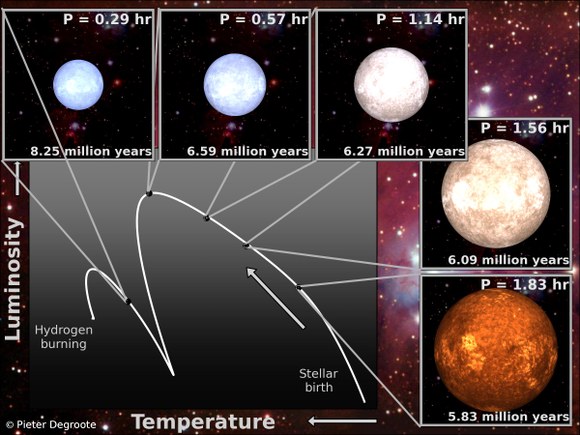| Online: | |
| Visits: | |
| Stories: |

| Story Views | |
| Now: | |
| Last Hour: | |
| Last 24 Hours: | |
| Total: | |
A Protostar’s Age Gleaned Only From Sound Waves

A composite image detailing the pre-life story of a star like the Sun, spanning about 10 million years from conception to birth. Image Credit: Pieter Degroote (KU Leuven) / ESO
Precisely dating a star can have important consequences for understanding stellar evolution and any circling exoplanets. But it’s one of the toughest plights in astronomy with only a few existing techniques.
One method is to find a star with radioactive elements like uranium and thorium, whose half-lives are known and can be used to date the star with certainty. But only about 5 percent of stars are thought to have such a chemical signature.
Another method is to look for a relationship between a star’s age and its ‘metals,’ the astronomer’s slang term for all elements heavier than helium. Throughout cosmic history, the cycle of star birth and death has steadily produced and dispersed more heavy elements leading to new generations of stars that are more heavily seeded with metals than the generation before. But the uncertainties here are huge.
The latest research is providing a new technique, showing that protostars can easily be dated by measuring the acoustic vibrations — sound waves — they emit.(…)
Read the rest of A Protostar’s Age Gleaned Only From Sound Waves (309 words)
© Shannon Hall for Universe Today, 2014. |
Permalink |
No comment |
Post tags: asteroseismology, Stellar Age, stellar evolution
Feed enhanced by Better Feed from Ozh
Source: http://www.universetoday.com/112972/a-protostars-age-gleaned-only-from-sound-waves/



